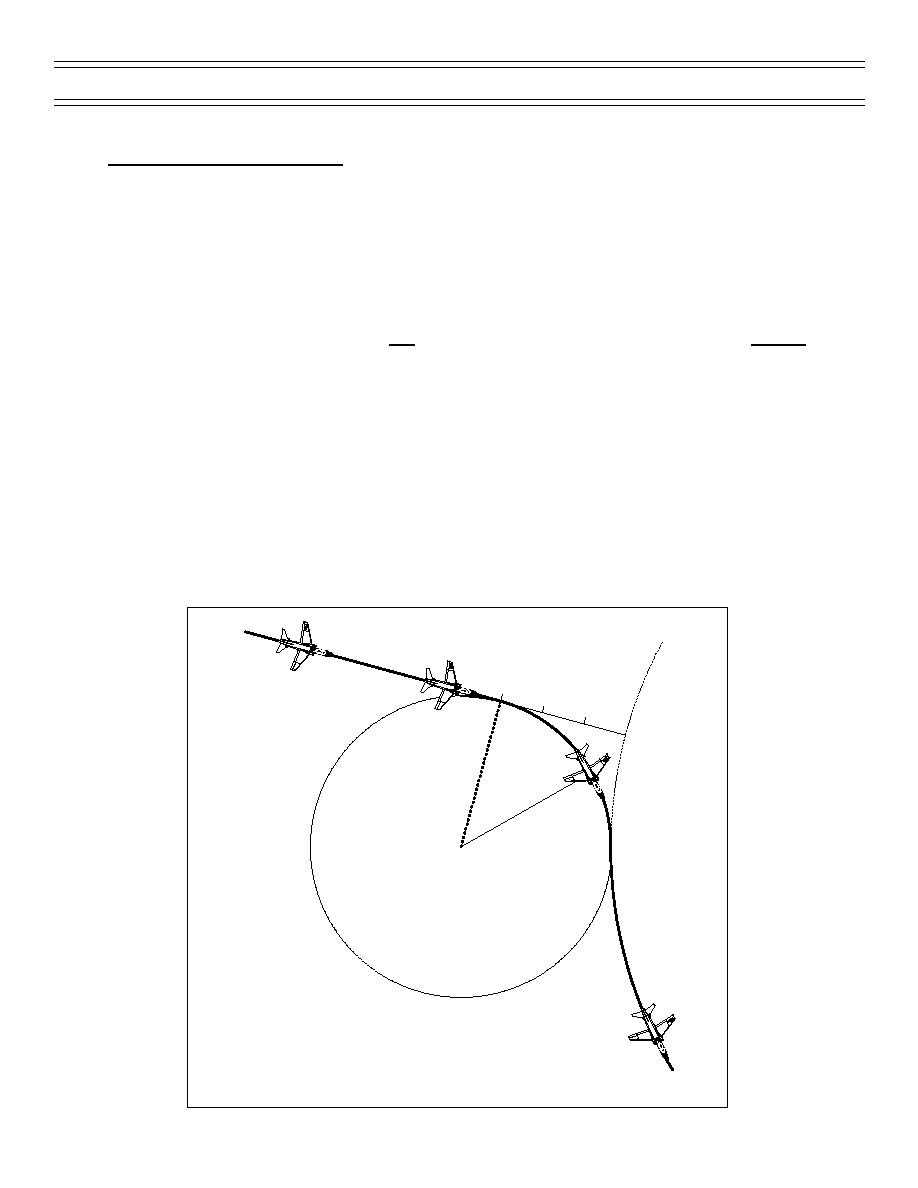
Instrument Flight
Flight Procedures
Intercepting an Arc from a Radial
The key to intercepting an arc precisely at the desired DME lies in performing an accurate lead point
calculation (LPC) to determine the correct lead point DME to initiate the interception turn. For radial to arc
intercepts, you will determine the lead point in miles (DME) instead of radials, which are used in arc-to-
radial intercept calculations discussed later in this chapter.
The turn to intercept an arc from a radial will normally be at approximately 90 degrees (Figure 21). When
intercepting an arc, you have to calculate the lead point at which you initiate the turn in order to intercept it
at the correct distance. To determine the lead point, use 1 percent of your ground speed. For example,
whether flying inbound or outbound at a ground speed of 250 kts, your lead point will be 2.5 DME prior to
the desired arc. When inbound to the arc, add the 1 percent to the arc DME and when outbound, subtract
1 percent from the arc DME when calculating the lead point.
When you reach the lead point, initiate a 1/2 SRT turn in the proper direction and maintain it until the
bearing pointer nears the 90-degree benchmark on the HSI display. You may have to modify your turn
rate/AOB somewhat in order to arrive on the arc at the proper DME.
When intercepting an arc from a radial that is significantly more or less than a 90-degree turn, adjust the
lead point by applying the following:
*
For turns of approximately 45 degrees, use 1/3 of the distance calculated for a 90-degree turn.
*
For turns of approximately 60 degrees, use 2/3 of the distance calculated for a 90-degree turn.
*
Turns of 30 degrees or less require very little lead.
13
12
11
1 0 D M E A rc
L e a d P o in t D M E
300 KG S
1 /2 S R T
1 % G S = R a d iu s o f T u r n
Figure 21: RADIAL-TO-ARC INTERCEPT
Page 72
(4-01) Original



 Previous Page
Previous Page
